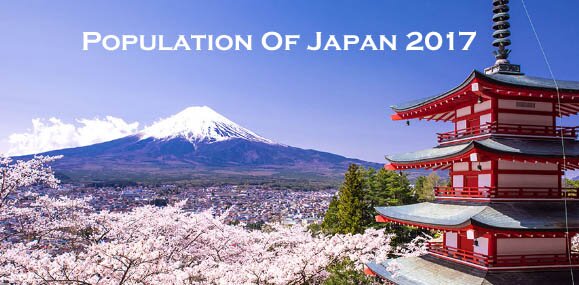Japan is an island country situated in East Asia. Archaeological research demonstrates that Japan was occupied since the Upper Paleolithic period. The primary composed mention of Japan is in Chinese history writings from the first century AD. Impact from different locales, chiefly China, followed by times of isolaation, especially from West Europe, has described Japan’s history. From the twelfth century till the year 1868, the country was led by progressive medieval military shoguns who governed for the sake of the Emperor.

It is a developed nation with an exclusive high standard of life and Human Development Index whose populace has the most astounding life expectancy and the third least newborn child mortality on the planet. It is one of the most advanced countries in the world in terms of technology and cleanliness. The country boasts of several technology that other country’s lack in it. The people out here are very warm as well as helpful.
POPULATION OF JAPAN IN 2017:
Talking about population, in order to check out the population of Japan in 2017, we need to have a look at the population of the past 5 years. They are as per the following:
- 2012 – 127 Million
- 2013 – 127.3 Million
- 2014 – 127.7 Million
- 2015 – 127.11 Million
- 2016 – 127.14 Million
The population of Japan in 2017 is forecasted to be 127.14 Million + 0.08 Million = 127.22 Million. So, the population of Japan in the year 2017 as per estimated data = 127.22 Million.
JAPAN Population 2017 – 127.22 Million(Estimated)
DEMOGRAPHY OF JAPAN:
Dissimilar to numerous different nations around the globe today, the number of inhabitants in Japan shows up to a great extent homogenous with the final population measurements comprised a 98.5% commitment from ethnic Japanese individuals. Also, there is a little proportion of foreign specialists living here, generally made up of Chinese, Koreans and Brazilians.
The biggest local ethnic group in the country is the Yamato people, albeit substantial minority groups incorporate the indigenous Ryukyuan and Ainu people groups. While Japan may appear to be homogenous as far as ethnicity and culture, this might be because of it’s non-appearance of racial and ethnic insights for Japanese nationals.
It is presently the world’s most oldest nation and it is set to get even more old. In the year 2050, it is assessed by the administration that 40% of its population will be more than 65. In the most recent couple of decades, the nation’s government managed savings spending plan has expanded 15%. While 5 decades prior there were 12 laborers for each retiree, there will be an equivalent 1:1 proportion in 50 years. This is one of the demographic issues that the country must address.
POPULATION DENSITY AND GROWTH OF JAPAN:
The population density of the nation is 336 persons per square kilometer. It’s population had contracted by right around 1 million people in five years.
While information on birth and death rates has provided clear confirmation that Japan’s population was on the decrease, this is the first time since records started that the statistics has affirmed the country’s population has dropped
FACTS ABOUT JAPAN:
- Japan is the tenth most crowded nation on the planet with a population of more than 128 million citizens.
- The Japanese custom of shaving their heads was an indication of retribution for damaging rules and rupturing honor.
- A standout among the most intriguing facts about Japan is that it has one of the most highest proficiency levels on the planet with 99% education in youngsters over 15 years of age.
- It is a volcanic archipelago of about 6,852 islands. The four biggest are Honshu, Kyushu, Hokkaido and Shikoku, which consist of 97% of Japan’s land area. The nation is separated into 47 prefectures in eight areas.
- Japan has the world’s third-biggest economy by ostensible GDP and the world’s fourth-biggest economy by purchasing power equality. It is likewise the world’s fourth-biggest exporter and fourth-biggest shipper



